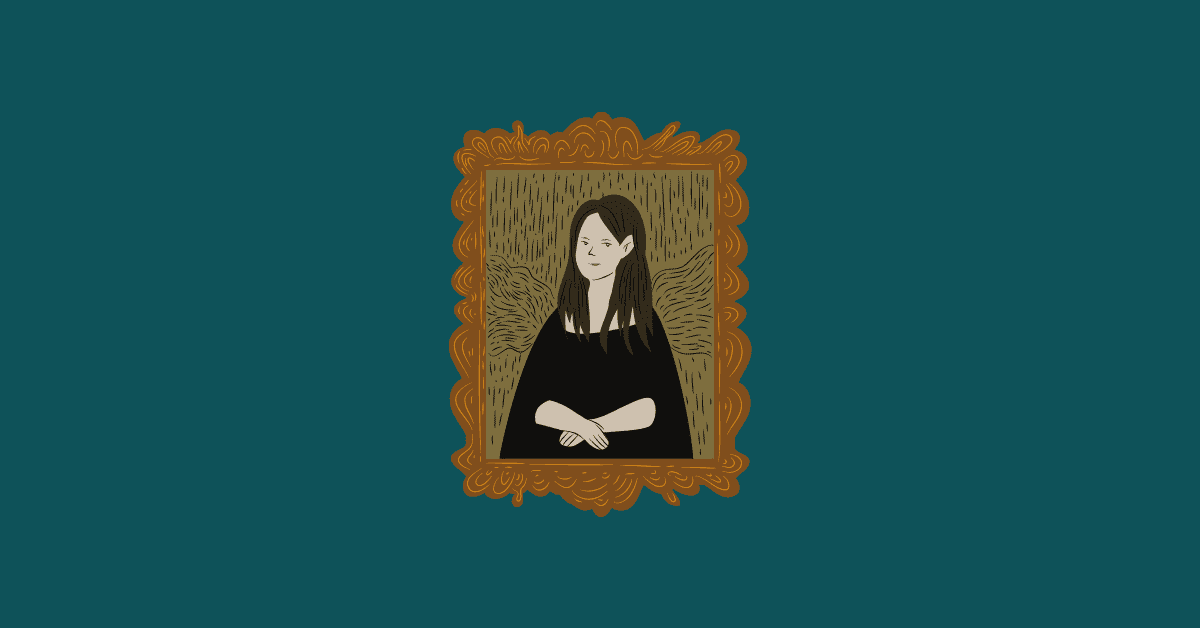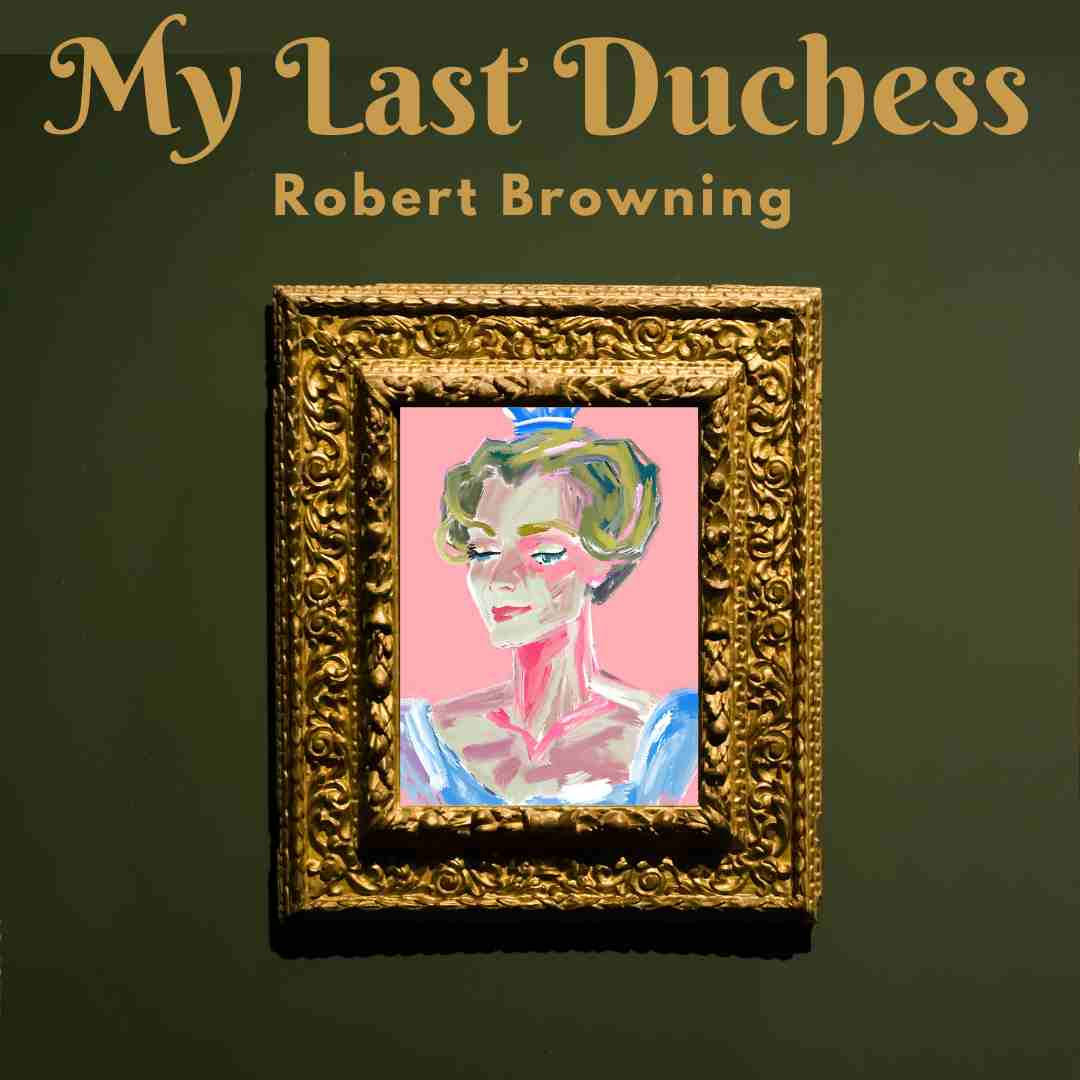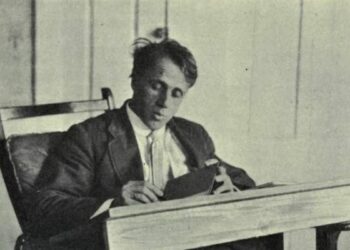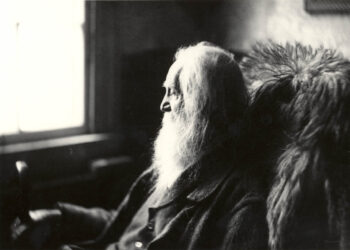Introduction
My Last Duchess By Robert Browning Summary And Themes Robert Browning’s dramatic monologue “My Last Duchess,” first published in 1842, is one of his most famous and frequently studied works. The poem is narrated by the Duke of Ferrara, who reveals his character and history through a conversation about a portrait of his deceased wife, the Duchess. With its intricate layering of meaning, psychological depth, and exploration of power dynamics, “My Last Duchess” provides a compelling glimpse into the Duke’s psyche and the themes of jealousy, art, and the nature of power.
Summary of My Last Duchess
Context of the Poem
“My Last Duchess” is set in Renaissance Italy, a period marked by political intrigue, artistic flourishing, and shifting power dynamics. The Duke of Ferrara, the poem’s speaker, is in the process of negotiating a marriage with another noble family. Through his reflections on the portrait of his last wife, the Duchess, Browning crafts a narrative that reveals the Duke’s controlling nature and his attitudes toward love, art, and power.
Structure and Form
My Last Duchess By Robert Browning Summary And Themes The poem is written in rhymed couplets and consists of 28 lines. Browning employs a specific rhyme scheme (AABBCC…) that contributes to the poem’s fluidity and musicality. The use of iambic pentameter gives the Duke’s speech a formal, yet conversational tone. This combination of structure and form mirrors the Duke’s attempt to present himself as cultured and refined while simultaneously revealing his darker nature.

Summary of the Poem
Opening Lines: The Portrait of the Duchess
The poem begins with the Duke addressing a visitor, presumably an emissary from a prospective bride’s family. He gestures to a portrait of his late wife, the Duchess, which hangs on the wall. The Duke describes her beauty and charm, hinting at a sense of pride in her appearance. However, he quickly shifts the focus to his feelings about her demeanor, suggesting that her friendliness and approachability were problematic.
“That’s my last Duchess painted on the wall, / Looking as if she were alive.”
These opening lines immediately establish the Duke’s possessive nature regarding the Duchess, treating her portrait as an object that reflects his status.
The Duke’s Jealousy and Control
My Last Duchess By Robert Browning Summary And Themes As the Duke continues to speak, he reveals his jealousy and frustration over the Duchess’s behavior. He implies that she was too easily pleased and flattered by others, which he found unacceptable. The Duke’s controlling nature becomes apparent as he suggests that he expected her to reserve her affections solely for him.
“She had a heart—how shall I say?—too soon made glad, / Too easily impressed; she liked whate’er / She looked on, and her looks went everywhere.”
This passage indicates the Duke’s need for control in his relationships, emphasizing his belief that the Duchess’s warmth and kindness were flaws rather than virtues.
READ MORE
The Duke’s Ultimatum
My Last Duchess By Robert Browning Summary And Themes The Duke’s frustration escalates as he recounts an incident where he confronted the Duchess about her behavior. He reveals that he ultimately decided to take matters into his own hands, leading to her demise. The Duke’s casual mention of her death highlights his cold detachment and reveals his sense of power over life and death.
“I gave commands; / Then all smiles stopped together.”
This chilling line conveys the Duke’s authority and the lethal consequences of his jealousy, suggesting that he is not only capable of controlling the Duchess in life but also in death.
The Duke’s Conceit and Sense of Entitlement
My Last Duchess By Robert Browning Summary And Themes Throughout the poem, the Duke’s sense of entitlement is evident. He views marriage as a means to enhance his status and wealth rather than as an emotional partnership. The Duke’s dialogue reveals that he is more concerned with appearances and power than genuine connection.
“I choose / Never to stoop.”
This line encapsulates the Duke’s arrogance and unwillingness to compromise or engage emotionally. His focus on control and dominance ultimately drives the narrative.My Last Duchess By Robert Browning Summary And Themes
The Conclusion: Negotiations and the Next Duchess
My Last Duchess By Robert Browning Summary And Themes As the poem nears its conclusion, the Duke shifts his attention back to the emissary and the impending marriage. He expresses his desire for a new bride, revealing his unyielding nature and his continued objectification of women. The poem ends with the Duke leading the emissary away to discuss the next marriage, suggesting that the cycle of control and possession will continue.
“Notice Neptune, though, / Taming a sea-horse, thought a rarity, / Which Claus of Innsbruck cast in bronze for me!”
This final image reinforces the Duke’s obsession with power and dominance, both in art and in life.
Themes in My Last Duchess
1. Power and Control
One of the central themes of “My Last Duchess” is the exploration of power dynamics in relationships. The Duke’s possessive attitude toward the Duchess and his casual reference to her death illustrate his desire for control over both her actions and her fate. The poem critiques the patriarchal nature of relationships, highlighting how power can lead to destruction.
2. Jealousy and Possession
Jealousy permeates the Duke’s narrative, driving his actions and attitudes toward the Duchess. His insecurities about her affections lead him to view her warmth as a threat, ultimately resulting in her demise. This theme emphasizes how jealousy can corrupt love and lead to tragic consequences.
3. Art and Objectification
The poem raises questions about the nature of art and its relationship to objectification. The Duke views the portrait of the Duchess as a trophy, a representation of his ownership rather than a tribute to her life. This theme underscores the ways in which art can be used to assert control and manipulate perceptions.
4. Mortality and Legacy
The Duke’s reflections on the Duchess’s death and the way he speaks of her legacy raise questions about mortality and how individuals are remembered. His desire to control her image after death suggests a fear of being forgotten, highlighting the tension between life and art as a means of preserving identity.
5. Gender and Patriarchy
“My Last Duchess” critiques the gender dynamics of the time, showcasing the Duke’s objectification of women and his entitlement to control their lives. The Duchess becomes a victim of patriarchal norms, illustrating how societal expectations can trap women in oppressive situations.

Characterization in My Last Duchess
1. The Duke of Ferrara
The Duke serves as the poem’s primary character and narrator. His character is defined by arrogance, possessiveness, and a profound sense of entitlement. He is cultured and refined on the surface, yet his underlying ruthlessness is revealed through his words. The Duke’s dialogue reveals his manipulative nature, suggesting that he views relationships as extensions of his power.
2. The Last Duchess
Although the Duchess never speaks in the poem, her presence is felt through the Duke’s words. She is portrayed as a beautiful and kind woman whose warmth ultimately becomes her downfall. The Duke’s recollections of her serve to highlight her humanity and the tragedy of her situation. The portrait represents her identity, reduced to a mere object that the Duke controls.
Conclusion
Robert Browning’s “My Last Duchess” is a masterful exploration of power, jealousy, and the complexities of human relationships. Through the Duke’s dramatic monologue, Browning exposes the darker aspects of love and possession, revealing the consequences of unchecked jealousy and the objectification of individuals. The poem invites readers to reflect on the themes of art, mortality, and the societal dynamics that shape personal relationships.
(FAQ)
Q1: What is the significance of the title “My Last Duchess”?
The title emphasizes the Duke’s possessive nature, indicating that the Duchess is viewed as a possession rather than an individual. The word “Last” implies that there may be future wives, highlighting the Duke’s ongoing quest for control and dominance.
Q2: What themes are explored in “My Last Duchess”?
Key themes include power and control, jealousy and possession, art and objectification, mortality and legacy, and gender and patriarchy. The poem critiques the dynamics of relationships and the consequences of jealousy and control.
Q3: How does Browning use dramatic monologue in the poem?
The poem is written as a dramatic monologue, allowing the Duke to express his thoughts and emotions directly to the reader. This technique reveals his character and provides insight into his motivations and attitudes.
Q4: What is the role of art in the poem?
Art serves as a symbol of possession and control. The Duke’s description of the portrait of the Duchess reflects his desire to control her image and legacy, transforming her into an object that he can display and manipulate.
Q5: How does the poem address gender dynamics?
“My Last Duchess” critiques patriarchal norms and the objectification of women. The Duke’s treatment of the Duchess illustrates the oppressive nature of gender dynamics, where women are seen as possessions rather than individuals with agency.
Q6: What does the Duke reveal about himself through his speech?
Through his speech, the Duke reveals his arrogance, jealousy, and desire for control. His casual references to the Duchess’s death indicate a lack of empathy and highlight his ruthlessness in relationships.
Q7: How does Browning create a sense of foreboding in the poem?
Browning creates a sense of foreboding through the Duke’s ominous tone and chilling references to the Duchess’s death. The gradual revelation of the Duke’s controlling nature builds tension and unease.
Q8: What is the relationship between the Duke and the Duchess?
The relationship between the Duke and the Duchess is characterized by control and objectification. The Duke’s jealousy leads to the Duchess’s tragic fate, illustrating the destructive consequences of possessiveness.
Q9: How does the setting influence the poem?
The Renaissance setting of the poem reflects a time of political intrigue and power dynamics, which shapes the characters’ relationships. The Duke’s status as a nobleman further emphasizes his sense of entitlement and control.
Q10: What is the overall message of “My Last Duchess”?
The poem conveys a cautionary tale about the dangers of jealousy, possessiveness, and the objectification of individuals in relationships. It highlights the complexities of love and power, encouraging readers to reflect on the consequences of unchecked emotions.
READ MORE




